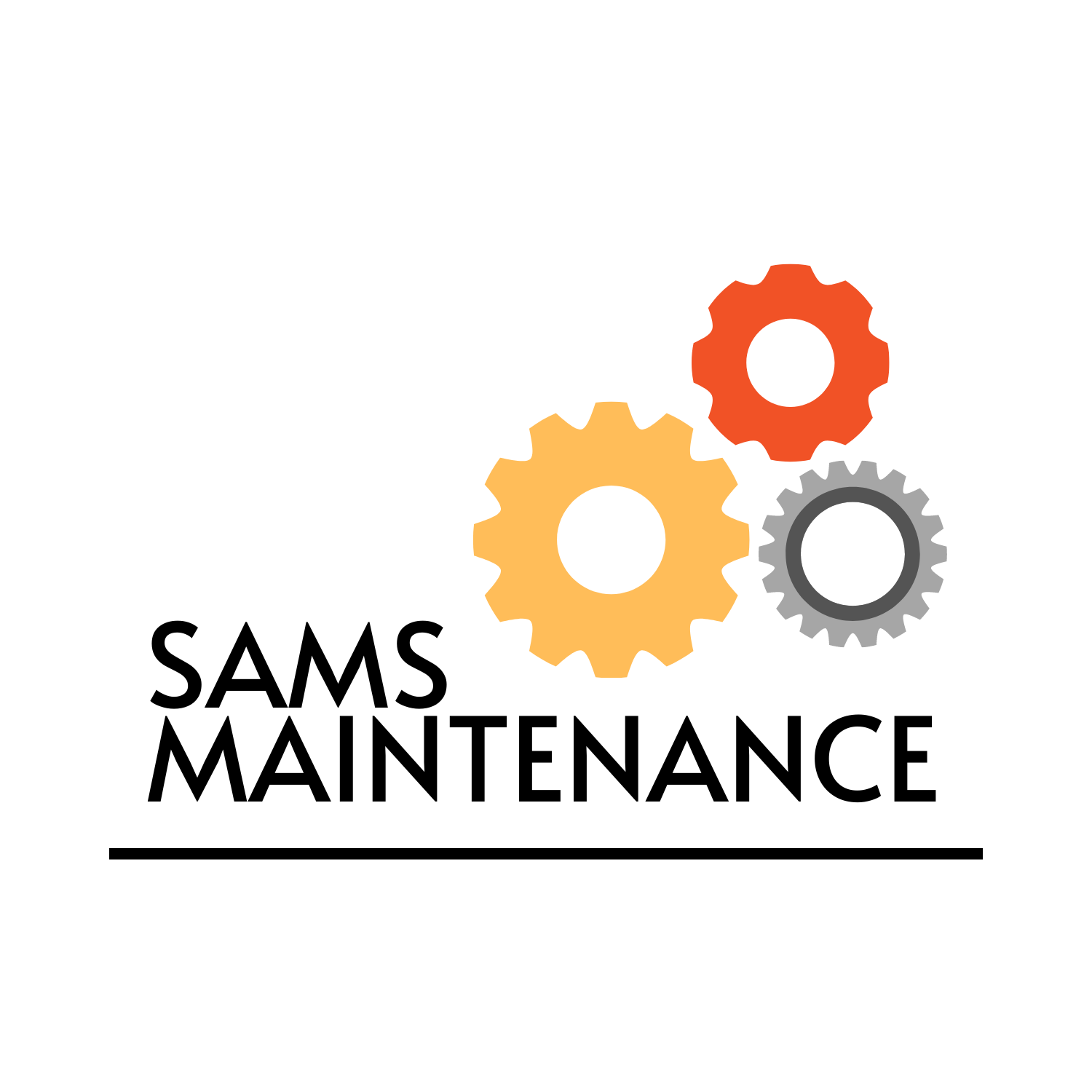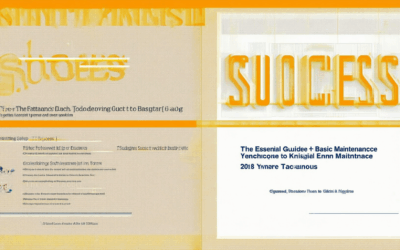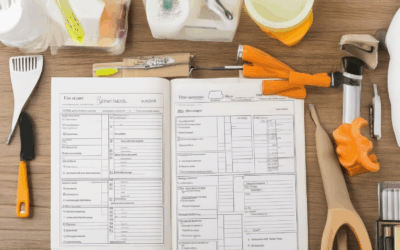Basic home upkeep is often overlooked until it becomes a major issue, but taking proactive steps can prevent costly repairs and extend the life of your home. Whether you’re a seasoned homeowner or new to the role, mastering the essentials of basic home upkeep is crucial for maintaining a healthy living environment. This comprehensive guide delves into the key practices every homeowner should know, covering everything from routine maintenance to seasonal tasks. From understanding the 1% rule for home maintenance to streamlining daily routines, this article provides actionable insights to help you stay ahead of potential issues. Discover how to create a personalized home maintenance checklist by month, implement quarterly inspections, and tackle DIY repairs with confidence. By prioritizing basic home upkeep, you not only enhance your home’s health but also safeguard your investment for years to come. Read on to uncover the secrets to maintaining a well-maintained home and saving money in the process.

What Routine Maintenance Is Required for a House?
The routine maintenance of a house involves a combination of tasks that ensure the property remains in good condition, prevents costly repairs, and maintains functionality. Here’s a breakdown of essential maintenance tasks:
Exterior Maintenance
- Gutter Cleaning: Clean out gutters and downspouts twice a year to prevent water damage and overflow.
- Roof Inspection: Check for missing shingles, damaged tiles, or leaks.
- Painting: Exteriors should be painted every 3-5 years to protect against weather damage and maintain curb appeal.
- Deck and Porch Maintenance: Inspect for rotting wood, loose boards, and structural issues.
- Fencing: Check for damaged posts, loose rails, and holes in the fence.
Heating, Ventilation, and Air Conditioning (HVAC)
- Filter Changes: Replace or clean HVAC filters monthly to ensure optimal airflow and energy efficiency.
- Ductwork Inspection: Look for leaks or blockages in the duct system.
- Programmable Thermostat Check: Ensure the thermostat is functioning correctly and set appropriately.
Plumbing System
- Leak Detection: Check for water leaks under sinks, around pipes, and near appliances.
- Drain Line Cleaning: Clear clogs in kitchen drains, showers, and laundry units.
- Water Heater Inspection: Check for leaks, rust, or corrosion around the tank and vent pipe.
- Water Softener Maintenance: Monitor salt levels and ensure the unit is functioning properly.
Electrical System
- Circuit Breaker Check: Test for tripped circuits and ensure they reset properly.
- Wiring Replacement: Replace outdated or frayed electrical wires as needed.
- Outlet Testing: Check for overloaded or malfunctioning outlets, especially GFCI outlets.
- Smoke Detector and Carbon Monoxide Detector Testing: Ensure these devices are working properly and replace batteries as necessary.
Appliance Maintenance
- Refrigerator: Wipe condenser coils and check door seals for proper closure.
- Dishwasher: Clean the drain hose and check for blockages.
- Oven: Clean the vent hood and exhaust fan to prevent overheating.
- Range Hood: Dust and clean the vent fan to ensure proper airflow.
Landscaping and Yard Care
- Grass and Lawn Care: Grade the soil around the house to prevent water pooling and mow the lawn regularly.
- Tree and Shrub Pruning: Trim trees and shrubs to maintain clearance and health.
- Pest Control: Inspect for pests like termites, ants, and spiders, and treat as needed.
- Sprinkler System Check: Ensure sprinklers are functioning properly and adjust timers as needed.
Window and Door Maintenance
- Weather Stripping: Check for gaps or worn-out weather stripping around windows and doors.
- Painting: Repaint exterior surfaces as needed to maintain protection against the elements.
- Door Locks: Test locks and ensure they work properly.
- Window Screens: Replace torn or damaged screens to prevent drafts and insect entry.
Fireplace and Chimney
- Annual Inspection: Hire a professional to inspect the chimney for creosote buildup and structural issues.
- Flue Cleaning: Clean the flue to prevent blockages and ensure proper ventilation.
Final Checks
- Foundation Inspection: Look for cracks or settling around the foundation.
- Driveway and Sidewalks: Repair cracks and ensure smooth surfaces.
- Garden Hoses: Check for leaks and replace as needed.
By staying proactive with these routine maintenance tasks, homeowners can extend the life of their property, save money on repairs, and enjoy a safer, more comfortable living environment. For professional assistance with any of these tasks, visit Sams Maintenance today!
Regular Home Maintenance Checklist: 10 Essential Tasks
Keeping your home in great shape requires consistent effort. Here’s a comprehensive guide to essential regular home maintenance tasks:
- Inspect Foundation:** Check for cracks, uneven surfaces, or signs of moisture. Schedule a professional inspection annually.
- Clean Gutters and Downspouts:** Remove debris and ensure proper drainage. Clean twice a year, especially before and after heavy rain seasons.
- Check for Leaks:** Examine pipes, faucets, and hoses. Test for leaks by checking for water flow or warmth.
- Service Appliances:** Regularly clean and maintain appliances like refrigerators, dishwashers, and water heaters. Flush hot water systems annually.
- Examine Flooring:** Refinish hardwood floors every few years, seal tile and grout annually, and clean grout thoroughly.
- Test Electrical Systems:** Check GFCI outlets, test smoke detectors monthly, and replace outdated wiring when needed.
- Plumbing Check:** Replace worn-out pipes or fixtures and install water filters to improve water quality.
- Fire Safety Inspections:** Test smoke detectors and carbon monoxide detectors monthly and ensure they’re placed correctly.
- Exterior Maintenance:** Pressure wash decks and siding, inspect chimneys for cracks, and trim trees near the house.
- Window Care:** Clean window tracks, check for worn seals, and replace screens as needed.
- Seasonal Tasks:** Tune up HVAC systems, change air filters, prep yards in spring, and perform fall cleanup.
- Flush Water Lines:** Open all taps and let water run to prevent freezing in cold climates.
- Winter Preparation:** Install storm doors, use antifreeze, and clear gutters before snowmelt.
Stay organized with a maintenance schedule, prioritizing tasks based on their importance. Consider professional help for complex tasks and enjoy the benefits of a well-maintained home!

General House Maintenance
House maintenance is essential to ensure the longevity and comfort of your living space. Regular upkeep can prevent costly repairs and keep your home in great shape. Here’s a comprehensive guide to general house maintenance:
- Exterior Maintenance
- Roof Inspection : Check for missing shingles, leaks, or damage. Clean gutters and ensure downspouts are clear to prevent water damage.
- Foundation Inspection : Look for cracks or signs of settling. Address issues promptly to maintain structural integrity.
- Gutter Maintenance : Clean debris and check for leaks. Ensure gutters are directed away from the house to prevent water buildup.
- Siding and Windows : Inspect for peeling paint, warped wood, or damaged glass. Replace caulking as needed to seal gaps.
- Driveway and Walkways : Clean and repair cracks or uneven surfaces. Consider sealing concrete surfaces to prevent deterioration.
- Interior Maintenance
- Cleaning : Regular dusting, vacuuming, and mopping to maintain a clean environment. Wipe down surfaces to prevent dirt buildup.
- Floors : Inspect for warping, cracking, or stains. Refinish or replace old flooring as needed to preserve functionality and aesthetics.
- Appliances : Clean and maintain cooking ranges, refrigerators, and laundry units. Check for leaks and proper functioning of appliances.
- Bathrooms : Clean tiles, grout, and fixtures. Inspect plumbing for leaks and ensure drains are clear to prevent clogs.
- Walls and Ceilings : Dust and wipe down surfaces regularly. Address stains or damage promptly to avoid further issues.
- Systems Maintenance
- HVAC System : Schedule regular tune-ups to ensure efficient operation. Replace filters and check ductwork for cleanliness and leaks.
- Plumbing : Inspect pipes for leaks or corrosion. Fix minor issues before they escalate. Run water through all faucets to detect slow drips.
- Electrical Systems : Check for exposed wires, tripping breakers, or flickering lights. Have a licensed electrician inspect and service the system annually.
- Security Systems : Test alarms, cameras, and locks to ensure proper functionality. Update passwords and ensure all components are in working order.
- Seasonal Maintenance
- Spring Maintenance : Clean gutters, inspect the roof, and trim trees. Pressure wash decks and walkways to remove dirt and mildew.
- Summer Maintenance : Check air conditioning units for proper cooling. Inspect outdoor lighting and ensure it’s functioning safely.
- Fall Maintenance : Rake leaves, clean chimneys, and inspect for falling branches. Prepare for colder weather by checking windows and doors for drafts.
- Winter Maintenance : Clear snow and ice from sidewalks and driveways. Inspect for pipes freezing and ensure proper insulation in attics and crawl spaces.

What is the 1 Rule for Home Maintenance?
The 1 rule for home maintenance is to set aside 1% of your property’s purchase price for ongoing upkeep and repairs. This simple guideline ensures you’re prepared for unexpected costs and helps maintain your home in great shape.
For example, if you buy a home for $250,000, budget approximately $2,500 annually for maintenance. This covers everything from minor repairs to larger projects like replacing a roof or fixing a plumbing issue.
This rule is crucial because home maintenance often involves unpredictable expenses. Whether it’s an emergency repair or routine care, having funds reserved makes it easier to handle these situations without delaying necessary work.
To stay proactive, consider:
- Inspect your home regularly for signs of wear and tear.
- Create a maintenance schedule for tasks like gutter cleaning, HVAC checks, and landscaping.
- Budget wisely and stick to your planned maintenance expenses.
- Consult professionals if you notice significant issues that require expertise.
For more tips and tools to manage your home maintenance, visit Sams Maintenance or explore resources like HomeAdvisor and Angie’s List for reliable services and guidance.
What is the 1 rule for maintenance?
The 1 rule for maintenance is to set aside 1% of your home’s purchase price annually for repairs and improvements. This simple guideline ensures you’re financially prepared for unexpected issues and planned upgrades. For example, if you bought a $250,000 home, setting aside $2,500 each year covers potential fixes, though actual costs may vary based on labor and material prices.
At Sams Maintenance, we recommend this approach because it provides a baseline for budgeting without overcomplicating the process. Regularly inspecting your home, preparing for seasonal changes, and staying ahead of small issues can significantly reduce costly repairs later. Our experts suggest starting with an annual walkthrough to identify potential problems before they escalate.
For more insights, explore our home maintenance tips and learn how to create a maintenance plan tailored to your needs. Remember, consistent care today saves you from costly surprises tomorrow.

How to Simplify Home Maintenance
Simplifying home maintenance begins with establishing a systematic approach to managing daily and seasonal tasks. Here’s a step-by-step guide to making home maintenance less overwhelming and more efficient.
- Establish a Routine : Set aside specific times each week for home maintenance tasks. Create a weekly schedule that includes checks for leaks, cleanliness, and minor repairs. Regularity helps prevent issues from escalating.
- Declutter Regularly : A clutter-free space makes maintenance easier. Schedule regular decluttering sessions to organize areas like the kitchen, bathroom, and living room, which are high-traffic zones prone to clutter buildup.
- Create a Maintenance Checklist : Develop a checklist tailored to your home’s unique needs. Break tasks into smaller, manageable steps. For instance, monthly tasks might include checking the HVAC system, cleaning gutters, and testing smoke detectors.
- Prioritize Preventive Measures : Address potential issues early to avoid costly repairs later. Inspect areas like pipes, sinks, and roofs for leaks. Replace worn-out items such as caulking and weatherstripping to enhance energy efficiency and reduce drafts.
- Focus on Quick Fixes : Tackle DIY projects wisely. Opt for simple fixes like patching walls or repainting rooms rather than embarking on major renovations. These efforts yield noticeable improvements without the hassle.
- Hire Professionals When Necessary : While many home maintenance tasks can be handled by DIY enthusiasts, some require expertise. Know when to call in professionals for tasks like plumbing or electrical work to ensure safety and efficiency.
- Organize Tools and Supplies : Keep tools and materials accessible. Use organizers or caddies to store items in designated areas, making it easier to locate what you need when you need it most.
- Celebrate Progress : Acknowledge completed tasks to stay motivated. Small victories, like fixing a leaky faucet or cleaning out a cluttered space, contribute significantly to overall home maintenance success.
By integrating these strategies into your routine, you can streamline home maintenance, reduce stress, and enjoy a more comfortable living environment. Remember, consistent effort leads to lasting results.




0 Comments